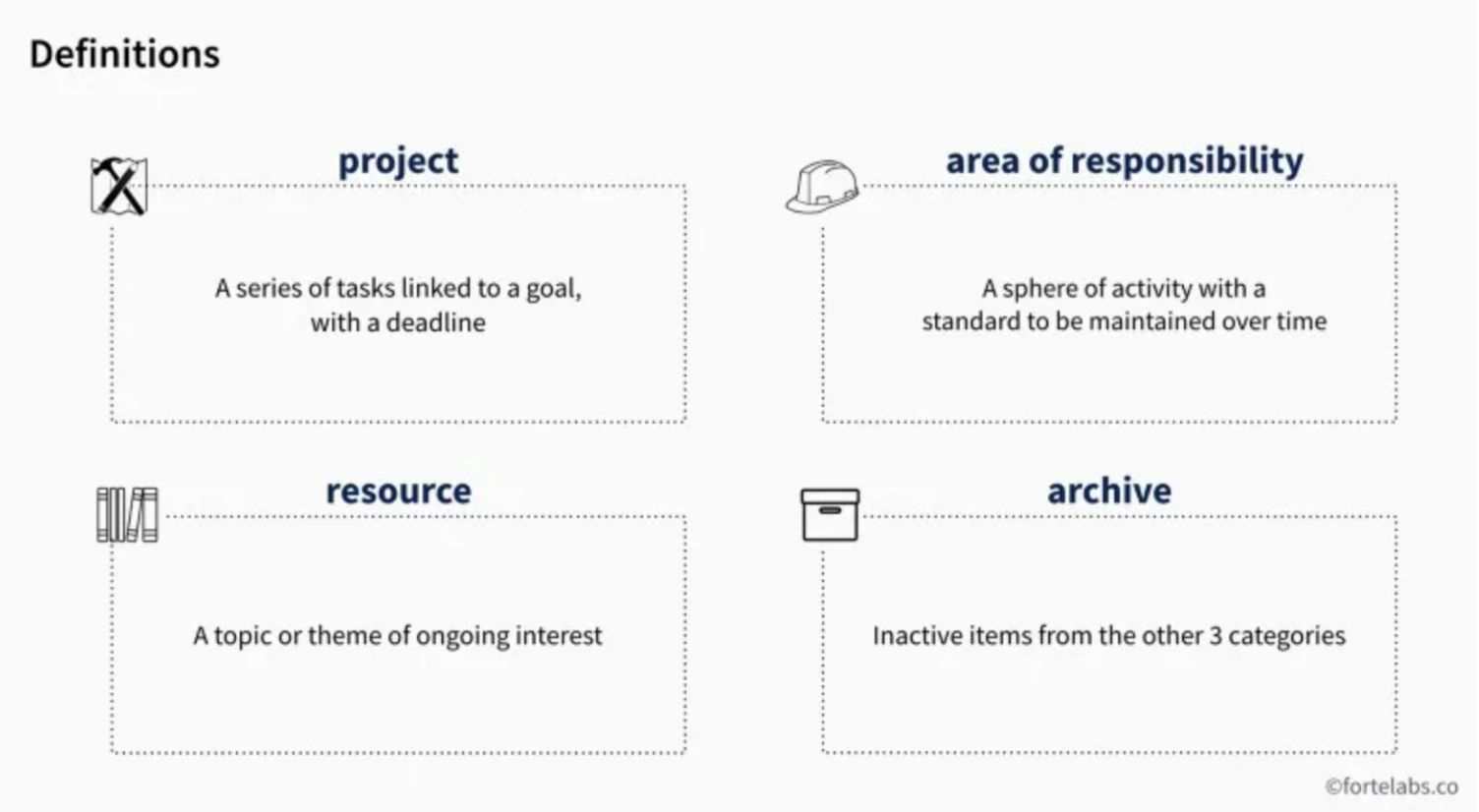Simplify Your Digital Workspace with PARA
A simple way to help bring order to our digital workspace.

Like our physical workspace, your digital space can get cluttered over time. A cluttered digital space makes it challenging to find the things you need when you need them.
While searching the web, I learned about a digital organizational system called PARA. This system transformed how I organize my digital documents. It was now much easier to find and store documents.
What is PARA?
PARA is a system created by Tiago Forte. It is a guide for storing and finding information/documents.
It stands for Projects, Areas, Resources, and Archives. These are the four top-level categories.
How to set it up?
Applying the PARA system to your digital workspace is straightforward. You create 4 main folders: Projects, Areas, Resources, and Archives.
You create subfolders within each of the top-level folders that relate to it. Each of the main folders may have several sub-folders.
The image below is a simple guide to what you could store in the main folder.

You create this organizational structure in the applications that store data. Some application examples:
- Microsoft OneNote
- Microsoft OneDrive / Google Drive / Dropbox / iCloud Drive
- Local Computer Storage
- Internet bookmarks
How I apply the PARA framework
I predominately use this framework at work, where I work as a mechanical engineer. I apply this framework to Microsoft OneDrive, internet browser bookmarks, Microsoft OneNote, and Microsoft Outlook email.
Microsoft OneDrive (Cloud Storage)
I created the four main folders on my Microsoft OneDrive (Cloud Storage). By storing my information in my Microsoft OneDrive, I can access them from different company computers if needed.
In my current position, as of writing this article, I am supporting various projects. I create a subfolder for each project under the projects folder. I add relevant information to each project subfolder, such as documents.
Other aspects of my position are unrelated to my project but take up time in my day from time to time. Some examples are my performance review assessments or functional/homeroom group information. I put this information in the areas folder.
You generally reference different part specifications and other information to design something mechanically. I usually store this and extra information in my resource folder.
When I finish a project or don't find a particular area or resource sub-folder helpful, I either delete it or move it over to the archives folder.
Additional Tip
If you create the four folders in your company's cloud server as I do, I recommend you create shortcuts to those folders and have them on your desktop, so you can easily access them. I will generally press the "windows" key, which will bring up the search menu, type the folder I am interested in, press the "enter" key, and then go to the sub-folder of interest. This workflow has helped me save time in finding the information I need for a given assignment quickly.
Internet Browser Bookmarks
I also apply these same four folders to my internet bookmarks menu. In each folder, I have sub-folders for each topic I want to gather information to reference in the future.
Whenever I come across a website that I may refer back to later, I will save it to its corresponding sub-folder so that it is easy to find in the future.
You can have the same sub-folder across the tools you apply the PARA framework.
Microsoft OneNote
When taking digital notes, I generally use Microsoft OneNote at work.
When applying the PARA framework to Microsoft OneNote, instead of creating folders, I use notebooks to apply the PARA framework. I use sections on each of the notebooks as the "sub-folders."
Like the other tools, when I create a new note, I have a guide to where I should make it so that it will be easier to find in the future when I need it.
Microsoft Outlook Email
Applying the PARA framework to email looks slightly different than the other tools. I use the main folders, but I rely more on categories, which are like tags for emails. I find that it is easier to sort your emails using categories, and in some instances, you may find it applicable to apply more than one category to an email. An example is if an email contains important information related to the project, I will categorize that email with the project name category and a category I created called "Important Reference." In the future, if I have to find that email, it will be easier to find it after applying those two categories to the search bar.
After some time, I may search all the emails with a particular category, such as a completed project category, and store them in a folder.
For general communication emails, I will archive them to a "Communication" subfolder under the Areas main folder.
Applying the PARA framework has helped bring some order to my email inbox, which can be challenging since, in most cases, it is the primary communication tool in companies.
Conclusion
The PARA framework has helped me bring order to all the information I have on my computer, which has helped me find and store data more efficiently.
It may take time to set this up if you already have much information on your computer. Still, from my experience, it has continuously paid back in time saved to retrieve and add information after setting up the PARA framework.